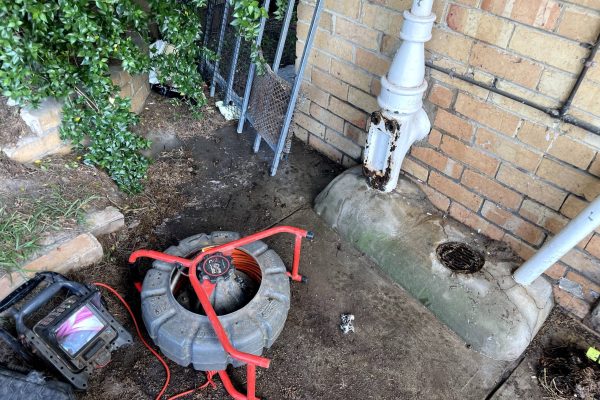Take a stroll around Camberwell, and you’ll find plenty of heritage homes. While they’re certainly pleasant to look at, these homes have their fair share of plumbing issues, starting with blocked drains!
Everyone’s faced this problem at some point, but for people living in older homes, it could be a recurring issue. Let’s have a look at why blocked drains in Bayside Melbourne disproportionately affect heritage homes, and what you can do about it.

Common Signs of Blocked Drains in Bayside Melbourne
It’s true that blocked drains are a common occurrence in heritage homes, but how do you know if that’s the problem? Common signs include:
Slow Draining Sinks and Bathtubs
The most obvious sign that you’ll experience is that sinks and tubs drain slowly in your bathrooms and kitchens. And in cases of severe blockages, water may not drain away at all. Just make sure to rule out issues in individual fixtures like sinks and toilets.
Strange Smells
When there’s a blockage in your drain, it’s going to start smelling. An unpleasant odour is one of the first signs of a blocked drain because food and organic matter gets stuck in the pipes and starts decomposing. And when you run the water to get rid of the smell, it just gets worse.
Gurgling Sounds
Another sign to look for is a gurgling sound when you flush the toilet or turn on the tap. This occurs because of air that’s trapped in the pipes and is being pushed up (Why is air trapped? Blocked drain!)
Why Blocked Drains Are Common in Older Homes
According to expert observations, here are some of the reason’s heritage homes face blocked drains more often:
Tree Roots Blocking Pipes
Tree root intrusion is one of the biggest causes for blocked pipes in heritage homes. Older trees that have been growing on the property for decades settle into the pipes, putting pressure on the plumbing system. Tree roots disproportionately affect heritage homes because they have older pipes, too. Typically made from terracotta or clay, they develop loose joints over time, allowing tree roots to enter. Once they’re inside, tree roots grow quickly, causing blockages and even breaking the pipes entirely.
Old Pipes
We mentioned how old pipes can contribute to tree root intrusion, but that’s not all. Decades of consistent use, heavy traffic, and ground movement can weaken pipes and make them crack or collapse. Older pipes, made from galvanised steel, clay, or terracotta, are especially prone to this. And when a pipe collapses, it’s not going to drain properly.
Outdated Drainage Systems
Older properties have outdated drainage systems that weren’t built for modern-day water usage. Heritage homes were mostly built in a time when occupants shared one bathroom, washed dishes by hand, and consumed less water overall. Now, properties are built with multiple bathrooms and equipped with high volume appliances. Without the right adjustments, these systems get overwhelmed quickly.
Shifts in Soil
With time, natural ground movements, subsidence, and construction activities can make your pipes crack, shift, or break. This damage can restrict the flow of water and contribute to blockages. As soil moves due to erosion, it can remove protective coatings on your pipes, making them vulnerable to damage from tree roots and other debris.
Preventing Blocked Drains in Your Heritage Home
Besides calling a professional to inspect your drains, there are a few things you can do to prevent blocked drains:
Pipe Relining
This is a non-intrusive way to fix a cracked or collapsed drain without digging it out. Older pipes made from clay or terracotta are prone to blockages, and relining them with flexible PVC piping can prevent blockages later on.
Installing a Root Barrier
Consider installing a root barrier to keep tree roots from entering pipes and blocking them. Other ways to manage root intrusion is to mechanically cut off roots that are growing inside pipes.
Be Careful of What Goes Down There
Try to limit what goes down the drain, whether it’s through the kitchen sink, bathtub, or toilet. In the kitchen, keep food scraps, grease, and coffee grounds out of the sink. Meanwhile, use drain screens in the bathroom to keep hair and soap scum from clogging the drain.
Hire Expert Plumbers For Blocked Drains in Bayside Melbourne
Drains in heritage systems are prone to blockages because of root intrusion and having outdated drainage systems. Common signs of blocked drains include foul odours, strange sounds from air whistling through blockages, and slow draining sinks. You can address and prevent them by calling a specialist plumber like Plumb Well Solutions. We use non-intrusive strategies to clear blocked drains, inspect them for signs of damage, and take preventative strategies to prevent future blockages.
